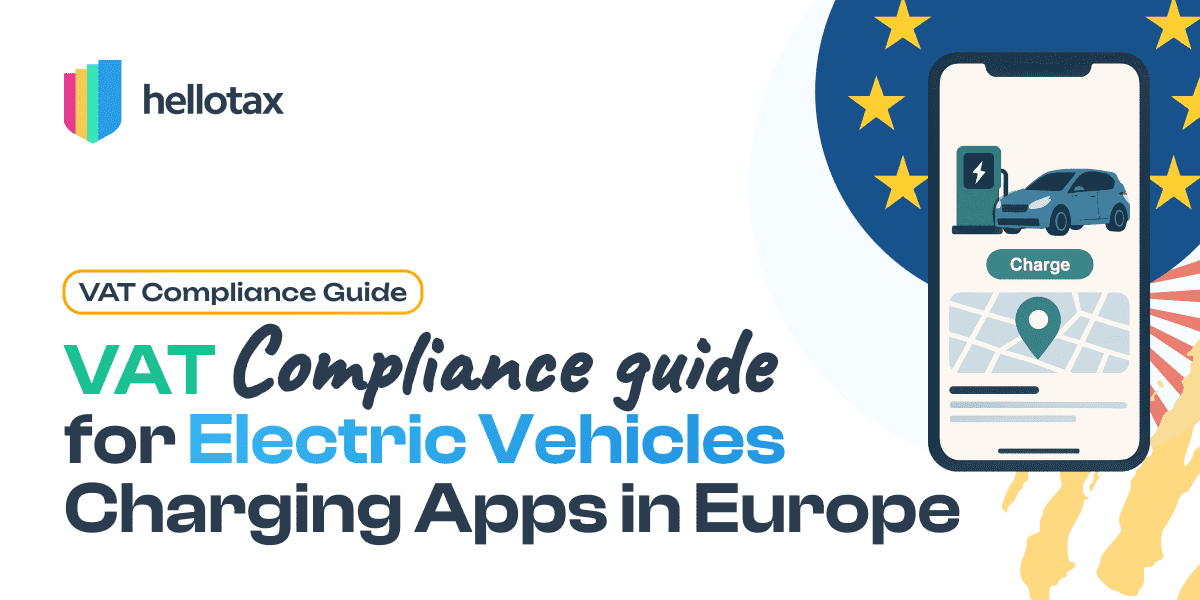Do you sell goods to UK customers? Do you have other trading relationships in the UK? Then you need to register for VAT in the UK. In the following we explain when you have to register, how the registration works and how to get a VAT number.
Antonia Klatt
Last Updated on 9 May 2022
When do I need to register for VAT in the UK?
Businesses and online sellers need to register for VAT in the UK for a number of reasons. This applies to English sellers as well as foreign and European retailers who sell products in England.
1. Mandatory registration if the VAT threshold is exceeded in the next 30 days
- The threshold above which VAT becomes applicable is set at £85,000 of revenue in the UK.
- As soon as you realise that your turnover will exceed this threshold within the next 30 days, you must register within these 30 days.
- The “effective day of registration” is the day on which you realised that you had to register. You are liable for VAT from this day on.
- Example: You realise on July 1st that you will exceed the threshold within the month. You must have registered by July 30th, but your “effective date of registration” remains July 1st.

Book a free consultation
Our VAT experts are happy to help you. Book a free consultation today!
2. Mandatory registration if the VAT threshold has been exceeded in the last 12 months
- The same applies if you notice that you have exceeded the threshold with your sales in the last 12 months.
- In this case, you must register within 30 days of the end of the month in which you exceeded the threshold.
- The “effective day of registration” is the 1st day of the month following this month.
- Example: Your turnover from May 10th, 2021 to May 9th, 2022 was more than £85,000. You must now get registered by June 30th and your “Effective Date of Registration” is June 1st.
3. Mandatory registration of Northern Irish traders selling VAT free products
- Normally companies or sellers that only sell VAT-exempt goods and services do not have to register for VAT.
- However, this does not apply to Northern Irish sellers who source products from suppliers who are VAT registered in the EU.
- Once the cost of these goods exceeds £85,000, these Northern Irish businesses must also register for VAT.
4. Mandatory registration of EU sellers
- The £85,000 threshold does not apply to foreign sellers and companies.
- EU and other foreign sellers who sell or import products to UK customers, i.e. who supply goods and services to the UK in any form, must register for VAT in England.
- Registration must take place as soon as it is foreseeable that products will be delivered in the next 30 days or as soon as the delivery has taken place.
5. Voluntary registration or application for a VAT exemption
- UK retailers whose turnover is below the £85,000 threshold can register on a voluntary basis and then also have to pay VAT. With an earlier, voluntary registration, penalties in the event of sudden VAT liability can be avoided.
- UK traders whose sales exceed or have only exceeded the £85,000 threshold briefly can apply for an exemption. When submitting the VAT1 form, explain why your sales will no longer exceed the threshold in the next 12 months.
If you are late registering for UK VAT you will still be liable to pay the VAT that would have accrued since the date you should have registered. This means: if you registered too late and perhaps did not even charge any VAT, you will pay the VAT debt out of your own pocket. Penalties and debt interest may also apply depending on how late the registration is. It is therefore important to take care of UK VAT registration at an early stage.
How does VAT registration work in England?
You can usually complete a VAT registration in the UK online. All VAT tasks in England are carried out via the “Government Gateway”. First you have to register for the gateway. As soon as the registration is complete, you will receive a Government Gateway User ID for your Government Gateway Account (also “VAT online account”), which you can use to log in at any time.
This account allows you to both register for UK VAT to obtain an English VAT number and submit advance VAT returns. You can also authorise a tax advisor to file VAT returns for you.
You can also register for VAT by post. The VAT1 form can be used to register by post for those who
- want to take advantage of the exemption
- want to take advantage of the flat-rate scheme for farmers
- who want to register a single division of an already registered business.
There are also a few other forms that must be submitted by post under certain circumstances.
- Form VAT1A must be submitted if an EU business sells products by mail order to customers in Northern Ireland
- The VAT1B form must be submitted if a UK company is importing products worth over £85,000 from the EU into Northern Ireland
- Form VAT1C must be submitted when disposing of assets for which refunds have been requested under the 8th or 13th Directive.
After 30 working days you will receive a VAT registration certificate from HMRC. The certificate will either be sent to your VAT online account or delivered by post if you were unable to register online. However, you can then use the VAT number to create an online account.

Book a free consultation
Our VAT experts are happy to help you. Book a free consultation today!
What is the format of the UK VAT number?
| United Kingdom (England, Wales, Scotland) | Northern Ireland | |
| Name | VAT registration number (VRN) | VAT registration number (VRN) |
| Country Code | GB | XI |
| Format | GB + 9 Numbers | XI + 9 Numbers |
| Example | GB123456789 | XI123456789 |
To avoid problems with UK authorities and fines, you should register for UK VAT early. hellotax helps with this. Our VAT automation tool can also automate and simplify the process of filing VAT returns, corresponding with the authorities, monitoring your transactions and much more. Contact us today and find out more!
FAQ
The standard VAT rate in England is 20% and applies to most goods and services. The reduced rate of 5% applies to certain products such as child seats and energy. Food and children’s clothing are taxed at 0%.
VAT returns are filed quarterly in the UK. It is also possible to make use of an exception rule, according to which only one VAT return has to be submitted each year.
The returns must always be submitted by the same deadline. The VAT returns are due one month and seven days after the end of the last accounting period.
After registration is complete it will take approximately 30 working days to receive your UK registration certificate and VAT number.

